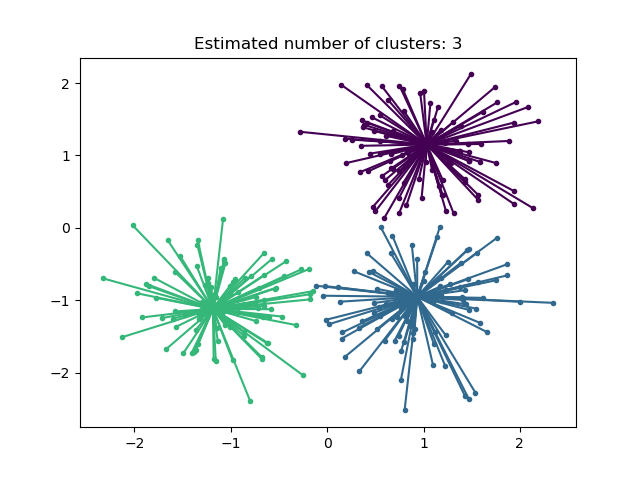Demo of affinity propagation clustering algorithm (original) (raw)
Note
Go to the endto download the full example code. or to run this example in your browser via JupyterLite or Binder
Reference: Brendan J. Frey and Delbert Dueck, “Clustering by Passing Messages Between Data Points”, Science Feb. 2007
Authors: The scikit-learn developers
SPDX-License-Identifier: BSD-3-Clause
import numpy as np
from sklearn import metrics from sklearn.cluster import AffinityPropagation from sklearn.datasets import make_blobs
Generate sample data#
centers = [[1, 1], [-1, -1], [1, -1]] X, labels_true = make_blobs( n_samples=300, centers=centers, cluster_std=0.5, random_state=0 )
Compute Affinity Propagation#
Estimated number of clusters: 3 Homogeneity: 0.872 Completeness: 0.872 V-measure: 0.872 Adjusted Rand Index: 0.912 Adjusted Mutual Information: 0.871 Silhouette Coefficient: 0.753
Plot result#
import matplotlib.pyplot as plt
plt.close("all") plt.figure(1) plt.clf()
colors = plt.cycler("color", plt.cm.viridis(np.linspace(0, 1, 4)))
for k, col in zip(range(n_clusters_), colors): class_members = labels == k cluster_center = X[cluster_centers_indices[k]] plt.scatter( X[class_members, 0], X[class_members, 1], color=col["color"], marker="." ) plt.scatter( cluster_center[0], cluster_center[1], s=14, color=col["color"], marker="o" ) for x in X[class_members]: plt.plot( [cluster_center[0], x[0]], [cluster_center[1], x[1]], color=col["color"] )
plt.title("Estimated number of clusters: %d" % n_clusters_) plt.show()

Total running time of the script: (0 minutes 0.285 seconds)
Related examples